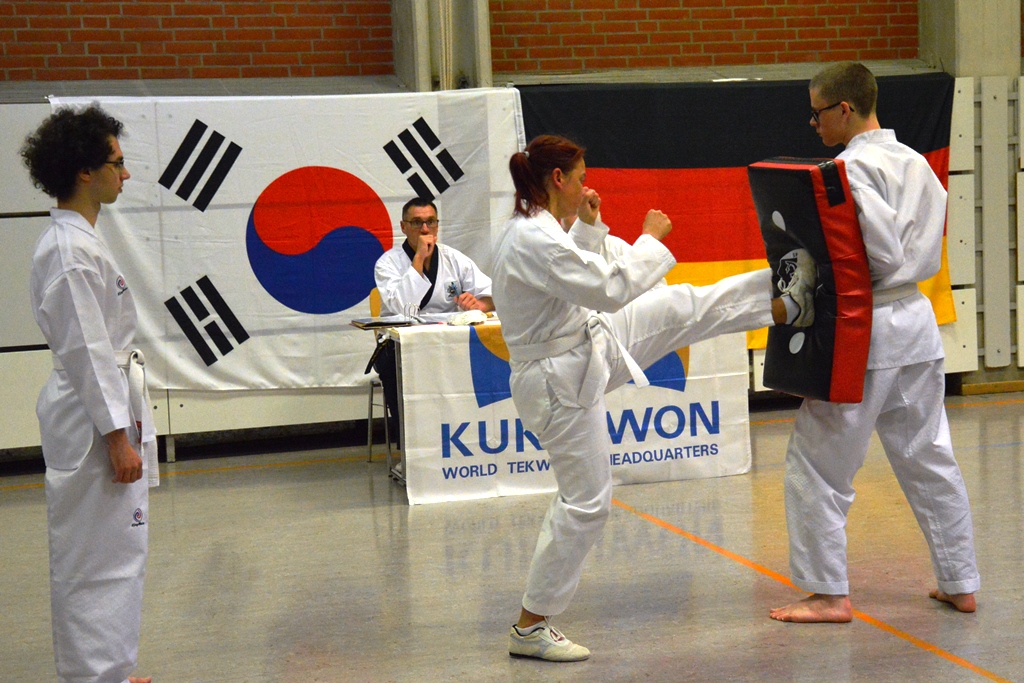Theory and philosophy of Taeguk Poomsae
Each poomsae has its own philosophical and spiritual meaning. This is reflected in the individual movements or in their expression. In the student poomsae, each one stands for a phenomenon in life. We would like to introduce you to this first. Taeguk originated from the 8 basic phenomena (palgue) (trigrams). Taeguk means greatness and eternity and has neither beginning nor end and stands for the origin of all being.
The following points are observed when performing the poomsae
- Begin and end at the same point
- Correct posture and line of sight
- The muscles are neither relaxed nor tense
- Rhythmic movements
- Execution without any stiffness
- Correct use of strength
- Breathing and movements match each other
- Balance and stability
- Precise execution
- Harmony and beauty
- Calm charisma
Source: http://tkd-d.com/en/theory/black-belt-poomsae.html
| Poomsae | Level | Meaning | Translation | Characteristic | Actions |
| TAEGUK IL- JANG | 7. Geup |
Heaven, Light | The creative | strong | 18 |
| TAEGUK IE- JANG | 6. Geup |
Lake | The cheerful | cheerful | 18 |
| TAEGUK SAM- JANG | 5. Geup |
Fire | The liable | shining | 24 |
| TAEGUK SA- JANG | 4. Geup |
Thunder | The exciting | exciting | 24 |
| TAEGUK OH- JANG | 3. Geup |
Wind | The gentle | immersive | 20 |
| TAEGUK YUK- JANG | 2. Geup |
Water | The unfathomable | dangerous | 23 |
| TAEGUK CHIL- JANG | 1. Geup |
Mountain | The stillness | dormant | 25 |
| TAEGUK PAL-JANG | 1. Dan | Earth |
The receiving | dedicated | 24 |
Meaning of the eight student forms.
There are eight student forms (Taeguk). Taeguk ("Tae" = greatness; "Guk" = eternity) is the name given to the eight basic forms of Taekwondo, which are particularly propagated by the WTF and which are valid throughout the world. Eight basic ideas of East Asian philosophy are derived from Taeguk. In ancient Korea, they were known as the eight symbols of power. Four of them can be found in the Korean flag today. The movements of the Taeguk pooms follow the basic lines of the eight symbols.












